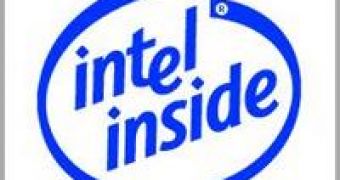The Tylersburg chipset is a HEDT (meaning high end desktop) product based on the 65 nanometer fabrication process that is designed at replacing the Intel Bearlake family of chipsets. The Bearlake is composed of the Logan and Bigby chipsets from the 3rd generation and they are intended for single and dual processor computing systems. Tylersburg is going to come out sometimes during the second quarter of 2008 and it will serve as the centerpiece of motherboards designed for Intel's processors based on the emerging Nehalem architecture. Alongside the above-mentioned chipset for desktops, two other chipsets aimed at DP servers and workstations, the Thurley and the Foxhollow, will soon follow.
While information about the Tylersburg chipset is somewhat scarce this time, the first chip with the AO revision, which was built for testing purposes after more than a year spent in the development phase, it is said that it exceeded Intel's expectations in terms of performance and energy savings. According to the news site TGDaily, the final version of the chipset will present more improvements as a much lower power consumption. Among the additional features found in the Tylersburg chipset there are a number of extra PCIe lanes, but as it is known that Bigby, which is due out soon, will feature no less than six PCIe lanes, so the Tylersburg which will appear months after Bugby will have at least the same amount. Bigby and Tylersburg will most probably become the foundation of Intel's new very high end desktop computing platform, the Skulltrail, that will be aimed at gamers and power users. The SkullTrails will be the first Intel platform aimed at personal use to feature support for two quad-core processors.
It is said that Intel is being cautious about AMD's upcoming Barcelona native quad core processors and is only moderately optimistic about how Clovertwon will be able to compete against a "true" quad core architecture. Intel believes that the 45nm Core 2 Duo will benefit from a "broad leadership" position in the industry, but at the same time it is possible that AMD's processors will "challenge us on specific server/workstation benchmarks."
"Clear performance and energy-efficiency leadership" is the goal that Intel set for the Nehalem processor architecture in 2008, while at the same time "provides the performance leading energy-efficient CPU cores". Intel has high hopes for Nehalem, it thinks that this architecture will stay ahead of AMD's processors both in the mobile and in the desktop market segments throughout 2009. Intel's chipset roadmap after Tylersburg is somewhat less clear. In 2009, the Capella mobile platform, the Piketon business desktop along side with Kingscreek consumer desktop will become available.

 14 DAY TRIAL //
14 DAY TRIAL //